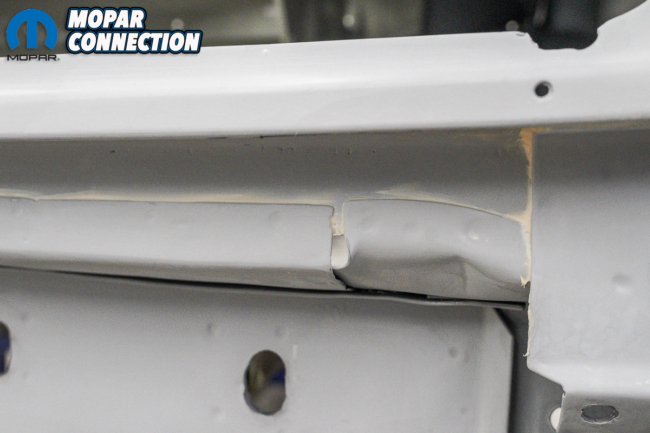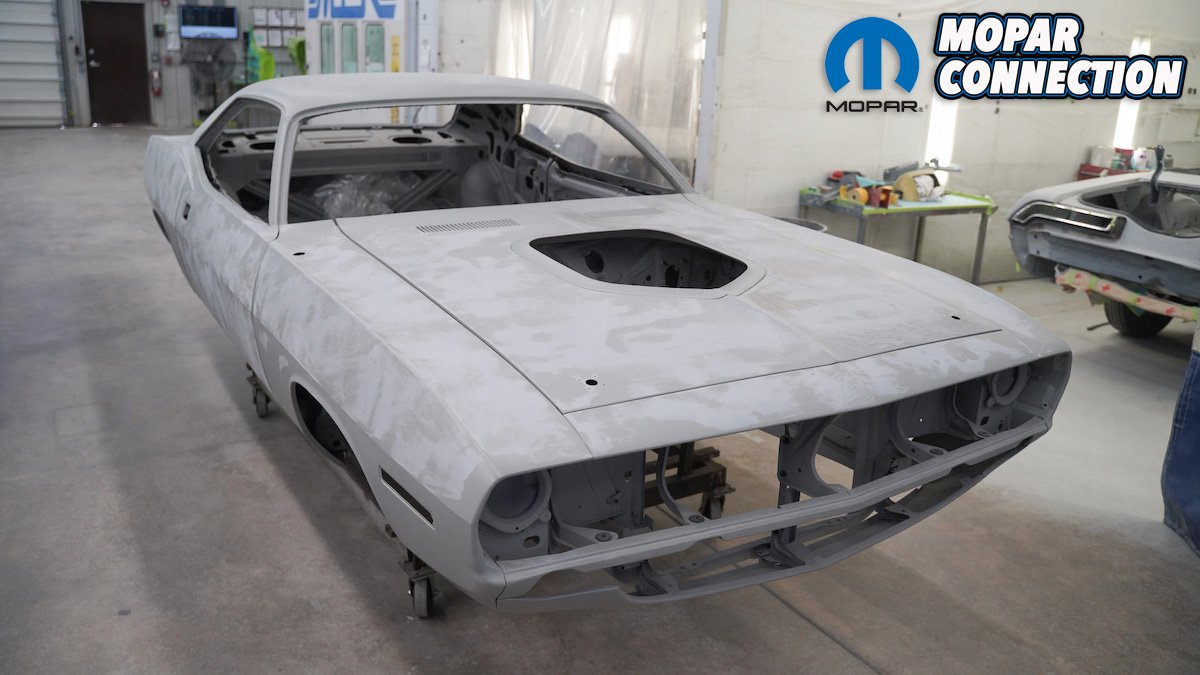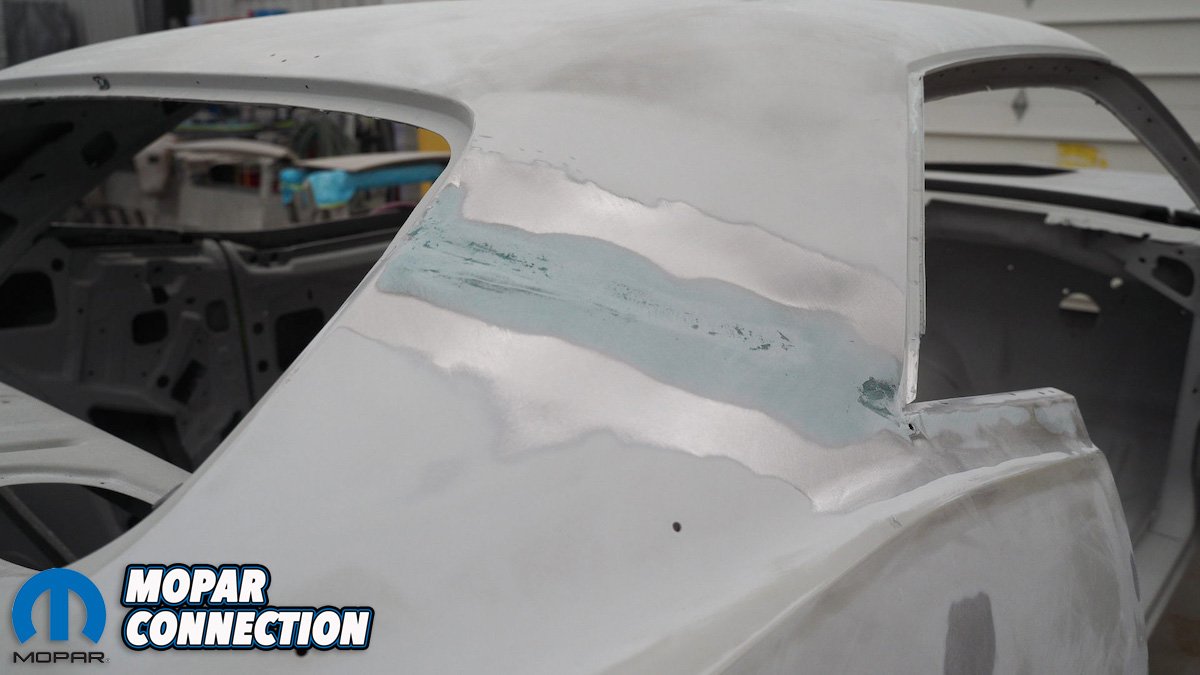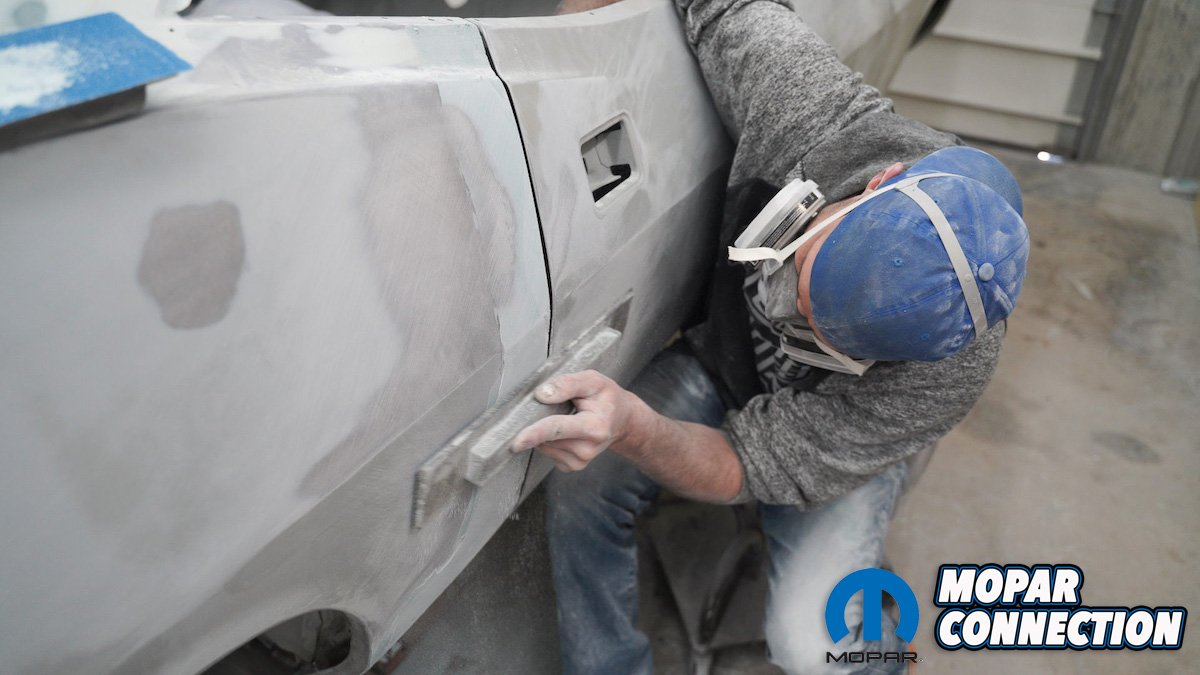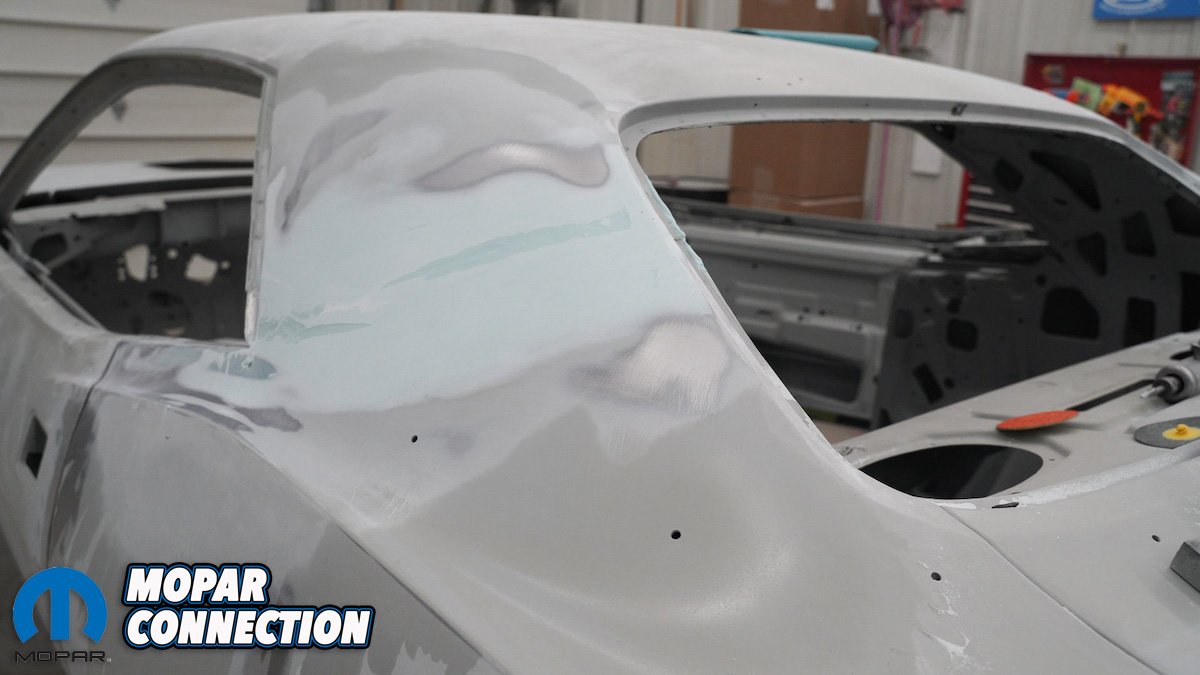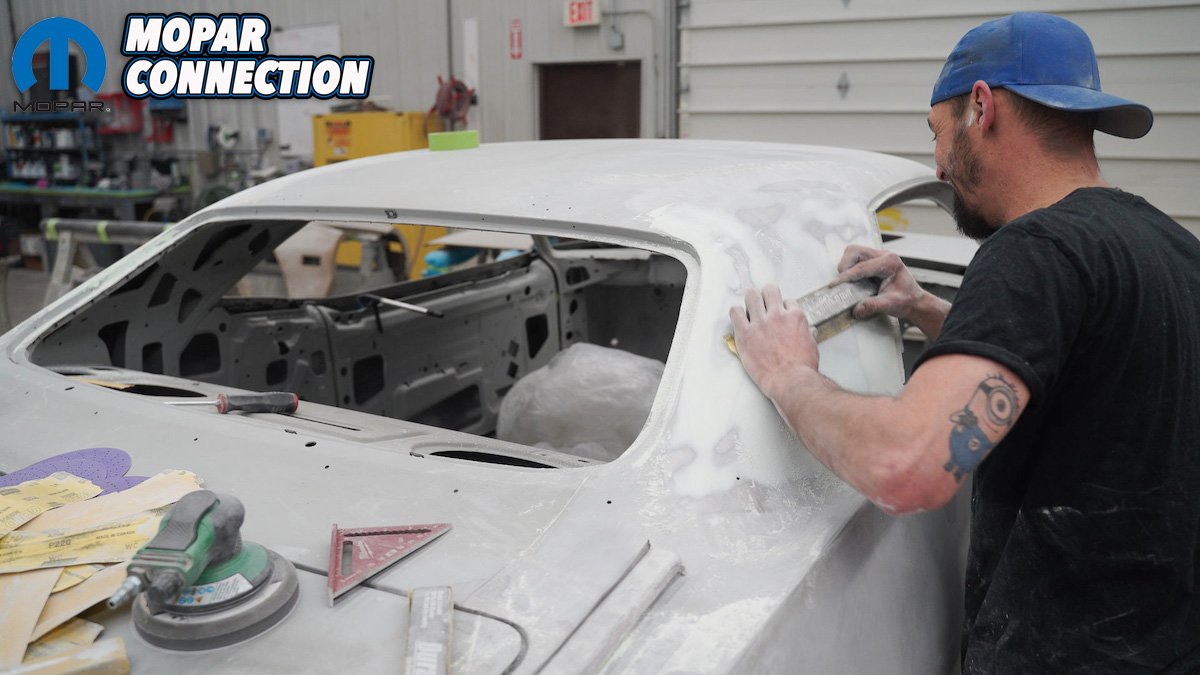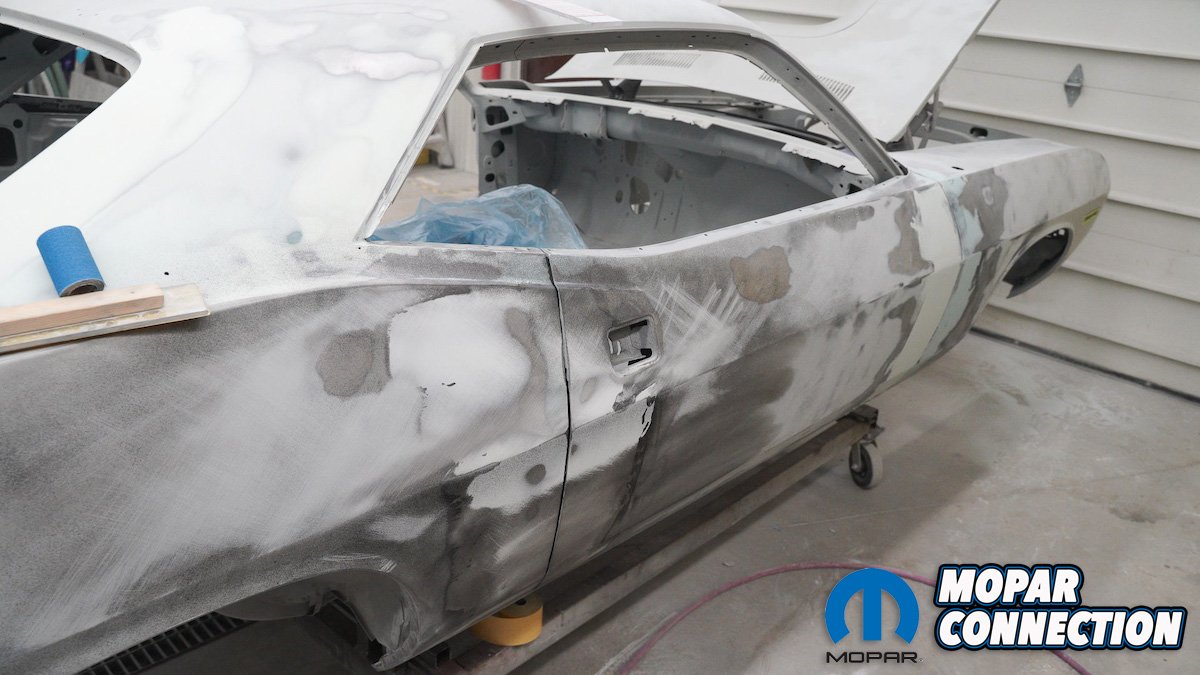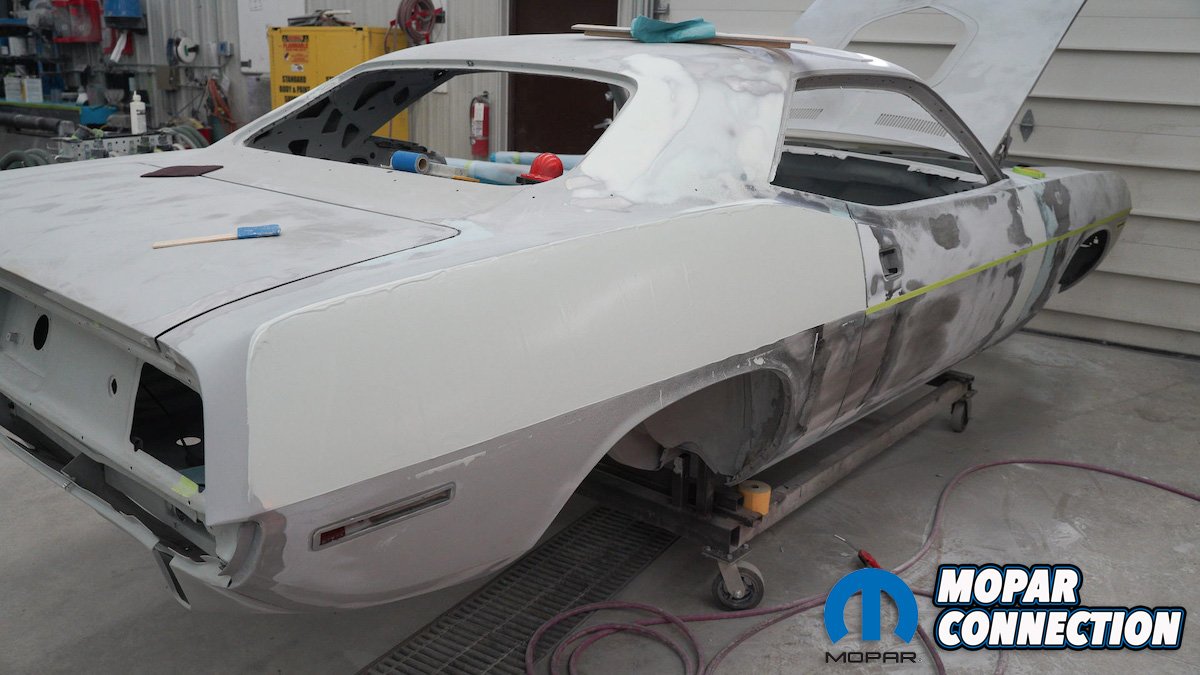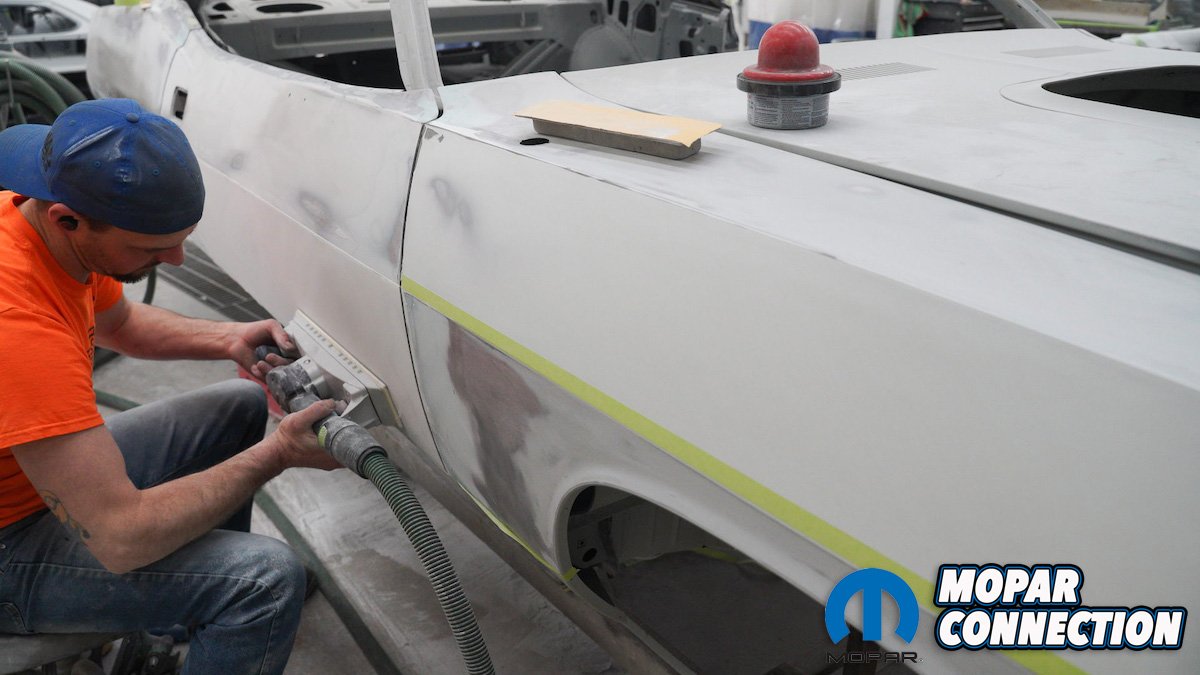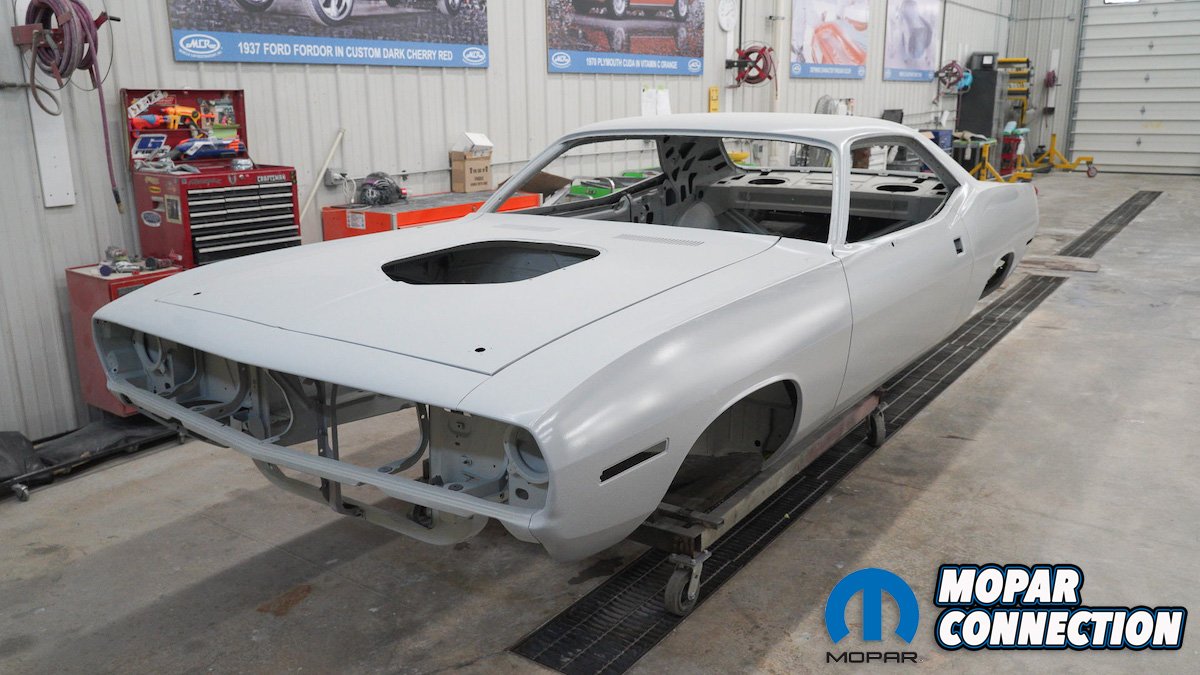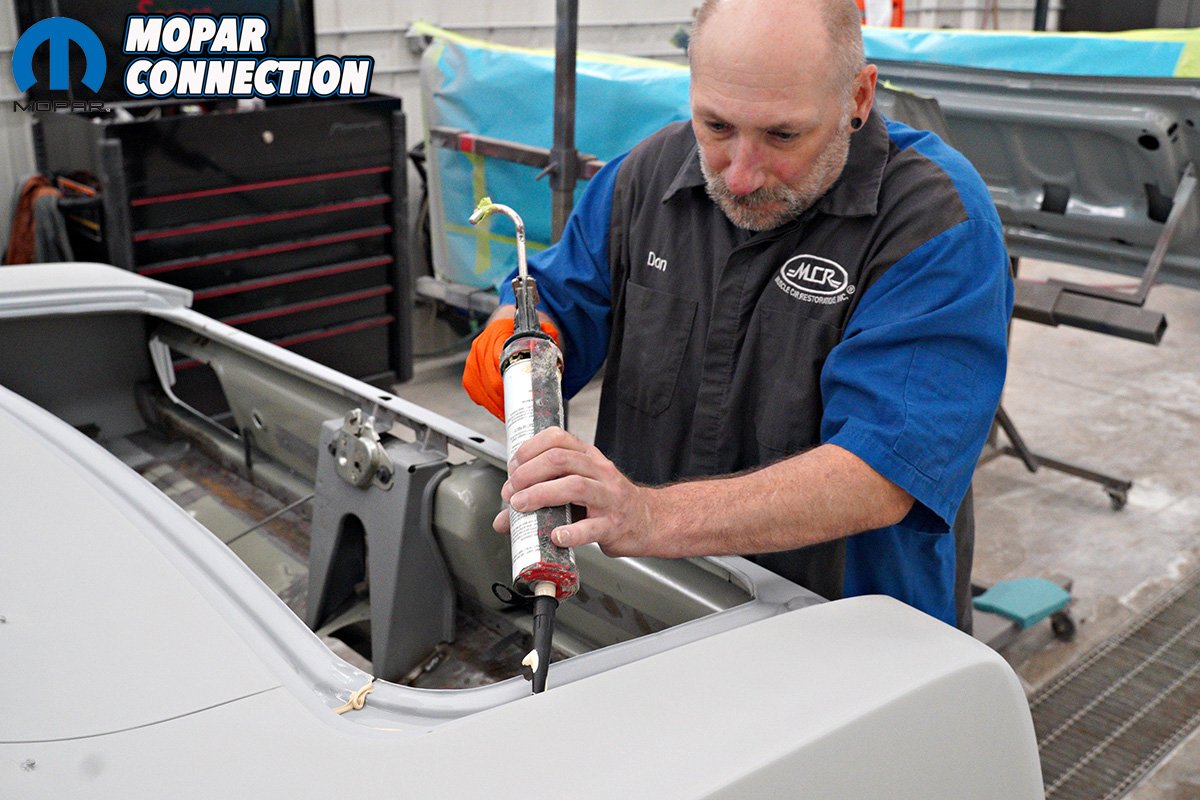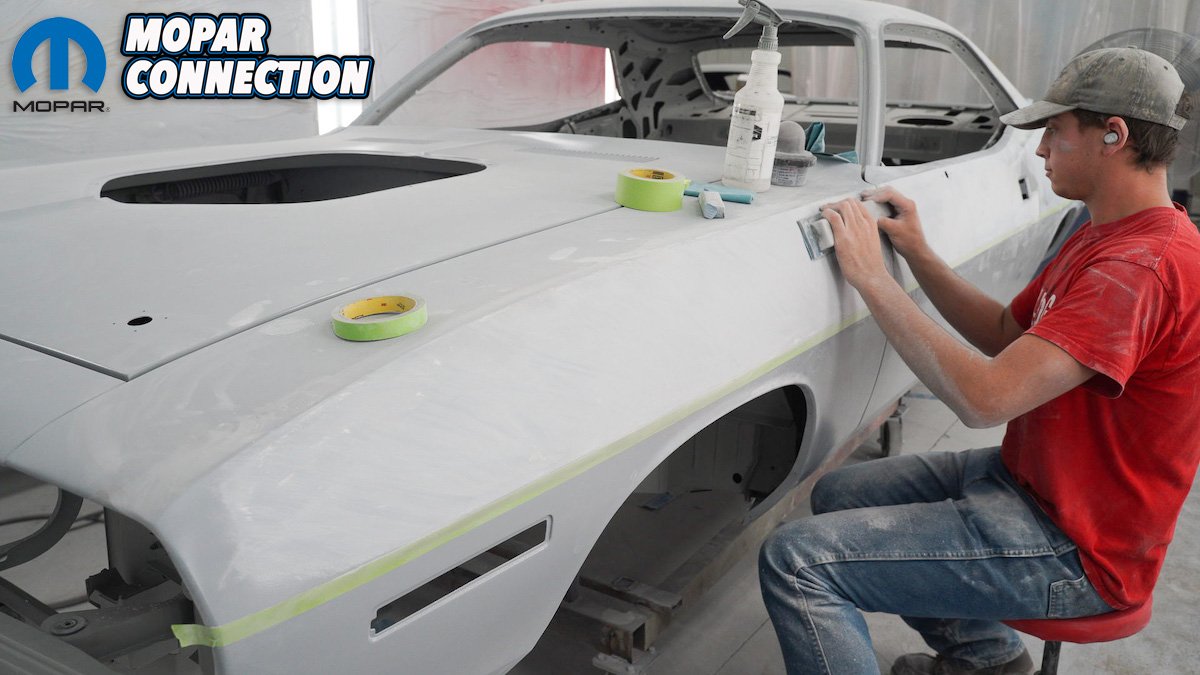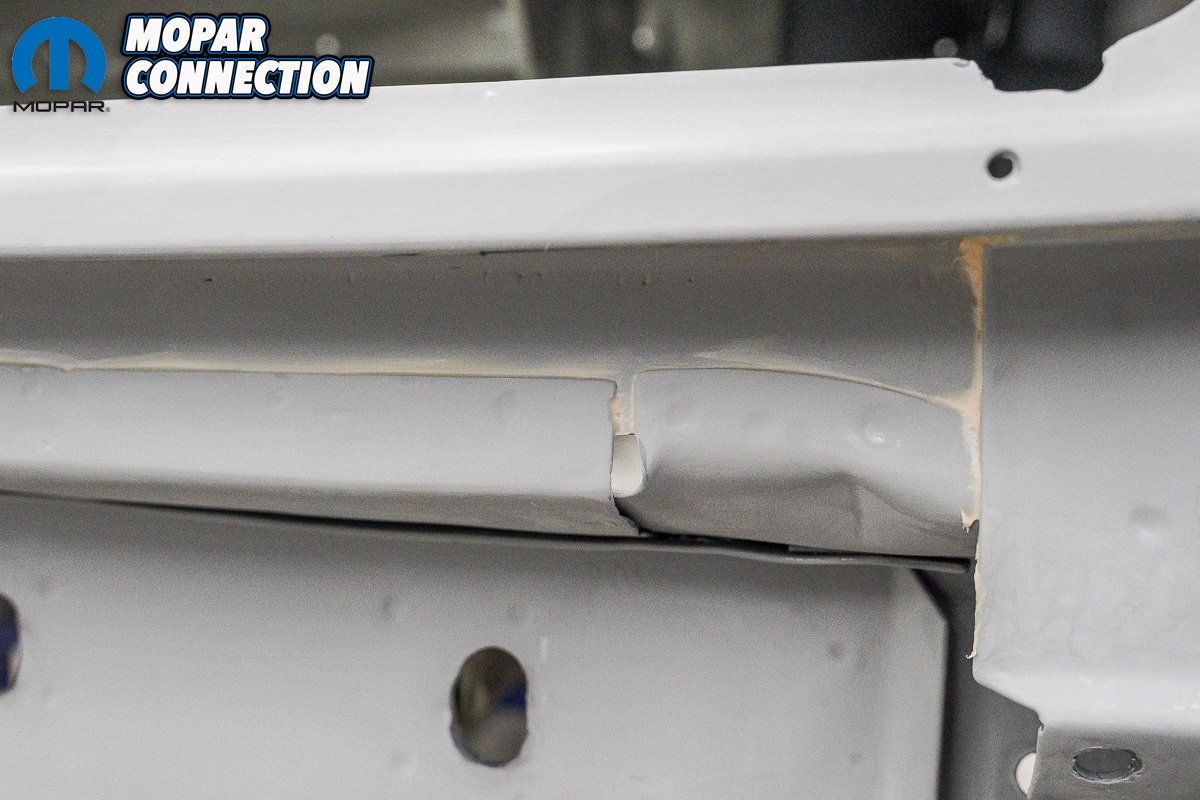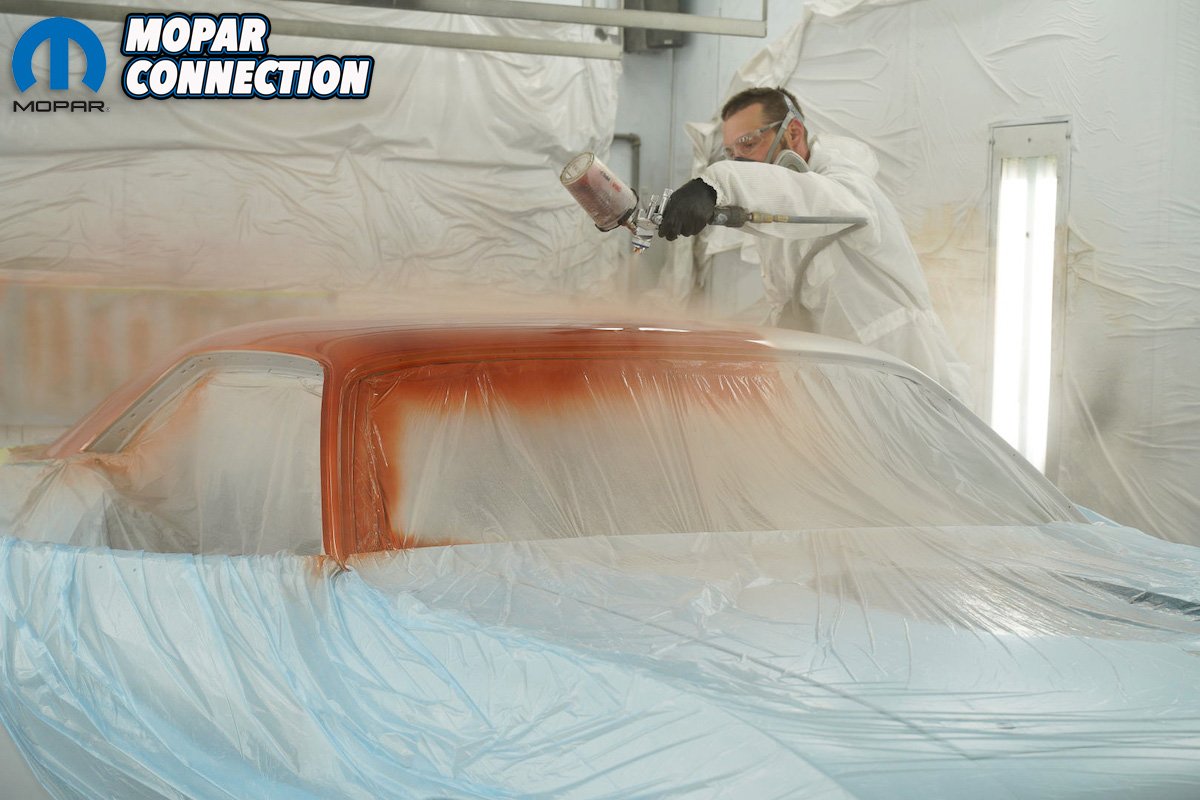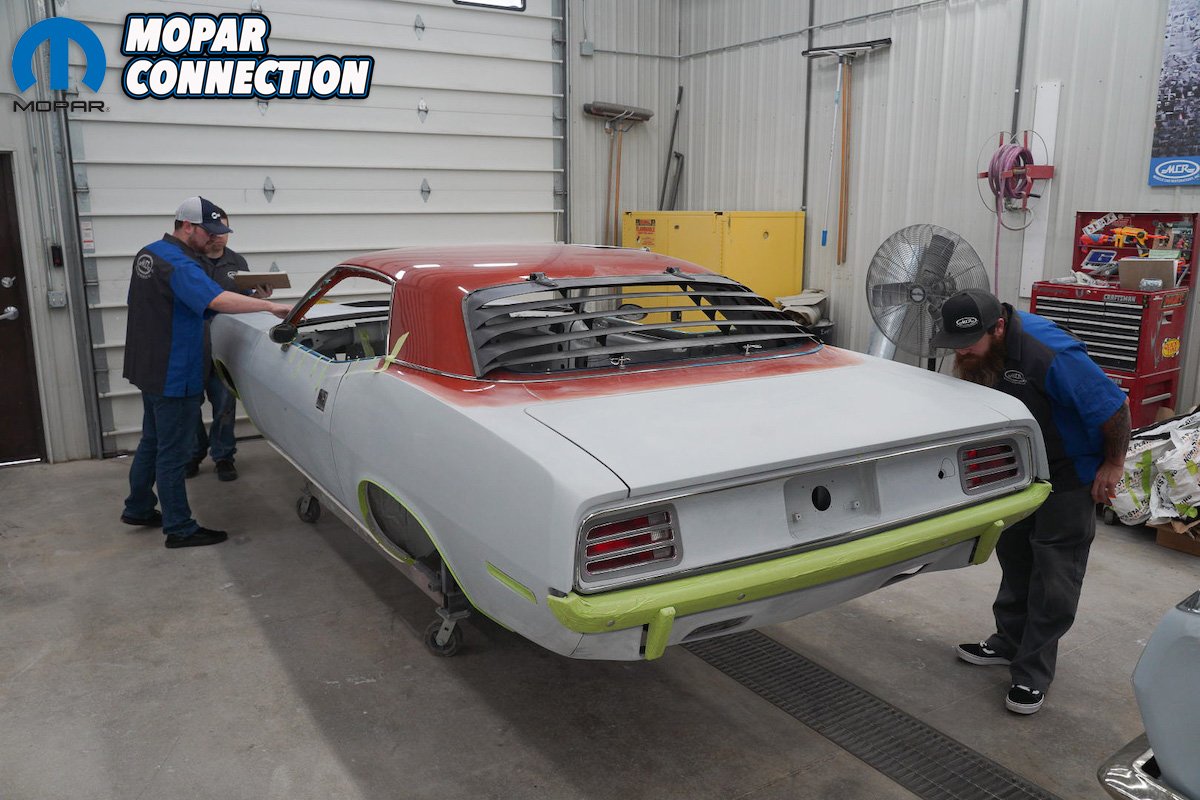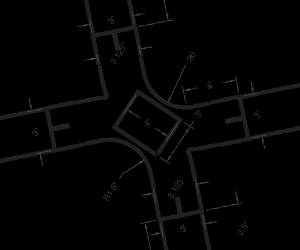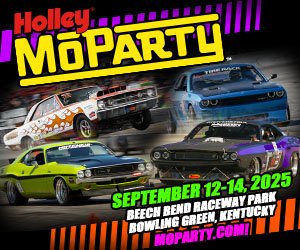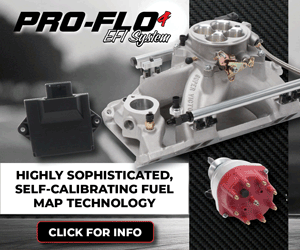
This is where things start to begin to get really serious. Not to say that the previous steps haven’t been. As was mentioned in our previous article, the metalwork is the foundation for everything after that but no panels are perfect. As good as the aftermarket panels are, they still have to be fitted to 50-60-year-old bodies. Plus, those 60’s, and 70’s (and beyond) body shells are not what they once were when they rolled down the line to be painted.
There are always minor imperfections that usually won’t show up until something really shiny is applied to them and that’s when you can’t not see them. The solution is proper finish bodywork. As mentioned in part 6, body work is never used to cover up bad sheet metal but rather to make sure that everything is absolutely flat and arrow straight so that when you look down the side of a panel there is not a single ripple in the surface must less a wave.

Above: The first step in the bodywork phase is to prime the whole car with DP50 LF and let it sit for seven days plus. The surface is then block sanded down to 120 grit, finished off with a Scotchbrite pad, and cleaned with SX.
Above left: Block sanding is done across all the gaps to ensure that they are in perfect alignment. Above right: Lead is no longer used to fill the quarter seams. The seams are first completely welded solid and then Duraglas is used in place of the traditional lead. MCR has found that Duraglas holds up just as well and is easier to work with. It is sanded down so that it’s just a little lower than needed.
The process starts with hand DA sanding all the panels to remove any manufacturer’s e-coat and to provide a good surface for the epoxy primer to grab onto. Priming happens right away after the metalwork is finished to prevent any rust from forming anywhere. The primer cures for about a week or so before the entire car is block-sanded to identify any high or low spots. If any corrective action needs to be taken, this is the time.
While this stage is often called “bodywork” that really is not a correct term as it brings to mind what is done in collision repair and that’s not at all what is done at Musclecar Restorations. Rather the entire car is skim coated with body filler and then the entire surface is block sanded to ensure that there are no high or low spots on any surface. Truth is, most of the filler material ends up on the floor and only enough remains to be sure the surfaces are absolutely flat.
Above left: Leaving the Duraglas a bit low allows room for the normal body filler to be applied over it. Above right: Block sanding can now be done working the same material as will be used on the rest of the car.
Above left: A darker guide coat is fogged onto the panels as needed. Block sanding a guide coat very quickly reveals even the slightest high or low spot. Above right: Skim coats are generally done one panel at a time and never over a body line.
Rivaled only by the metalwork, the bodywork phase is the most labor-intensive part of the entire restoration because flawless paint can only be achieved on top of flawless body prep. At various points along the way, as needed, darker guide coats are fogged onto the body while block sanding to aid in detecting any irregularities.
The next step is three coats of high-build PPG VP 2050 primer that is block sanded down to 320 grit to remove any orange peel. After which seam sealer is applied to all the factory locations around the body.
Above left: Body lines are precisely taped off to mark their peaks. Working the skim coats above and below the lines separately ensures that they are well-defined, straight, and in perfect alignment. Above right: Guide coats are used during the skim coat process as well. It’s hard to overstate the importance of this extra step in achieving perfectly straight panels.
Above left: Finishing off the skim coats is three coats of VP 2050 High Build Primer. It’s left to cure for a week or two. Above right: With the High Build Primer cured, it is then block sanded with 220 grit to knock down the orange peel and then finished off with 320 grit to prep the surface for paint.
Not only must the bodywork be flawless, but everything must perfectly fit to the body after it is painted so MCR essentially assembles the exterior of the car while it is still in primer (and fixes would be relatively easy) to be absolutely certain that everything installs as it should. Each individual department manager from the metal shop, assembly building, paint shop, tech advisor and even the sales and general manager gets eyes on the mock-up to be sure that nothing is out of place.
The final step is spraying a urethane sealer which when cured will be the last step before applying the color.

Above: Even during this final sanding phase, the body lines are taped so they stay crisp and clean. Once all the block sanding is complete, the car is then thoroughly washed and blown dry to remove any dust.
Above: It’s at this point that seam sealer is applied to all the factory locations. Following that, the final step before paint is a coat of DAS 3025 urethane sealer.
Above left: The roof area is sprayed with a single-stage paint as the normal base coat/clear coat is not needed under the vinyl top. Above right: The last critical step before paint is a mock up. All of the trim, taillights, bumpers, etc are installed and then inspected to be sure that everything fits perfectly. Following this, the final step before paint is a coat of DAS 3025 urethane sealer.














